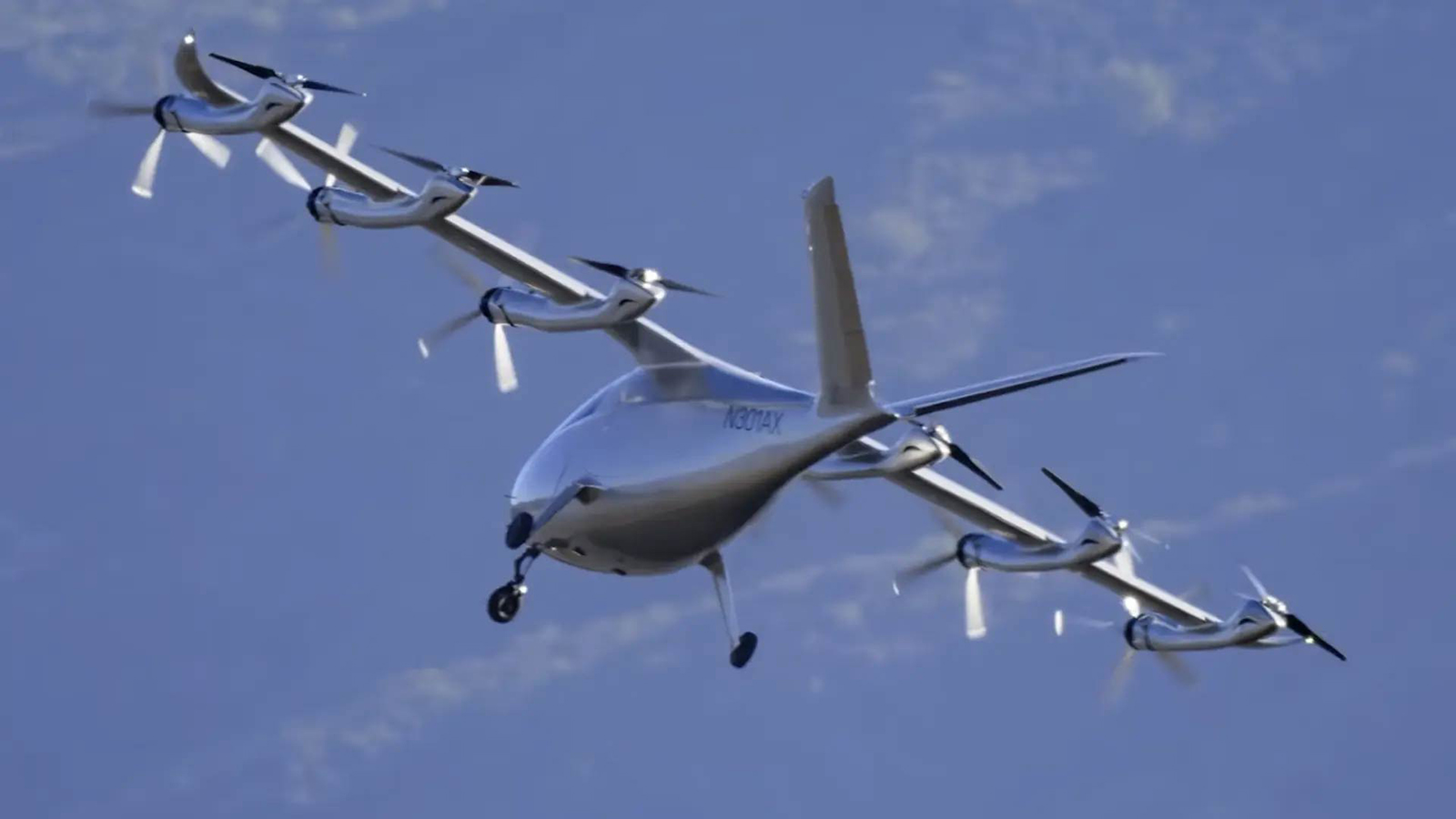Stay Up to Date
Submit your email address to receive the latest industry and Aerospace America news.
Archer Aviation becomes the latest to achieve this aerodynamic milestone
On Nov. 29, Archer Aviation’s remotely monitored tiltrotor test aircraft, the Maker, hovered and then began flying forward, as it has in past flights. But this time, the aircraft flew entirely with lift provided by the aerodynamic forces on its wing.
Previously, the unoccupied Maker had partially tilted six of its 12 rotors forward to shift from vertical flight, but in those flights, some lift was still provided by the rotors. Archer said the milestone of full transition to lift provided by its wing was “critical to validating the flight physics” of Maker, which is a prototype for the larger Midnight air taxis the company plans to build.
Among the field of electric aircraft developers, California-based Archer joined a handful of others that have achieved this transition, which is one of the most challenging aspects of winning confidence in winged eVTOLs, the electric vertical takeoff and landing aircraft that could soon be ferrying passengers and cargo locally.
Achieving transition was significant for Archer in part because it is difficult to simulate, says Tom Muniz, the company’s chief operating officer. If something were lacking in the design, the aircraft could aerodynamically stall, he says. To make sure there were no such issues, Archer and its competitors gingerly worked up toward full transition through a series of fully automated flights monitored from the ground.
“The tricky thing is, all of these things need to come together: the aerodynamics, the controls and the software, Muniz says. “You have unsteady loads, or forces being generated on the aircraft, on the wings and flying surfaces, and on all the propellers.”
To achieve transition, the air must attach smoothly to the curved top of the wing, meaning without significant turbulence in the flow that could jeopardize aerodynamic lift, he says. During Maker’s eight-minute flight at its California test site, the rotors tilted forward gradually to accelerate the aircraft to over 130 kilometers per hour, the aircraft’s aerodynamic stall speed.
Archer’s competitors achieve transition with various techniques. Some also tilt their rotors, but others tilt the wing, either fully or partially, while still others have lift-plus-cruise designs that fly vertically on rotors and then cruise with thrust provided by a separate propeller or propellers.
“Lift-plus-cruise is very simple from a controls standpoint. I use it [for instruction] in undergraduate classes because it’s just so simple,” says Pat Anderson, a professor at Embry-Riddle Aeronautical University in Florida. “But typically, such an aircraft is dragging along this whole rotor system, so a bunch of rotors are still hanging in the wind that aren’t doing anything once you transition to forward flight. So, from a control law standpoint, lift-plus-cruise is a very easy transition, but long-term efficiency and performance may suffer unless you stow some of those rotors somehow.”
No matter the design, rotor size is important, he says. “A large rotor when you’re hovering is good. But as you get into forward flight, you can end up with a propeller that is sized too big, especially in fast forward flight. So there are many tradeoffs.”
Proving transition in flight is necessary because theoretical knowledge or simulations don’t provide clear evidence of a successful design, Robin Riedel, an analyst with the consulting firm McKinsey & Company, said by email.
“Flight tests are required and always have a bit of uncertainty about a potential effect resulting from mixing airflows, and interactions with surfaces that may be difficult to predict during transition,” Riedel says.
“So far, I think most players [that have attempted transition] have had very successful transition flight tests. I am sure all of them learned a lot from the flight tests and made adjustments to designs and controllers based on it,” he says. “From my knowledge none had big unexpected effects that resulted in accidents or loss of aircraft.”
Get the latest news about advanced air mobility delivered to your inbox every two weeks.
About paul brinkmann
Paul covers advanced air mobility, space launches and more for our website and the quarterly magazine. Paul joined us in 2022 and is based near Kennedy Space Center in Florida. He previously covered aerospace for United Press International and the Orlando Sentinel.
Related Posts
Stay Up to Date
Submit your email address to receive the latest industry and Aerospace America news.




